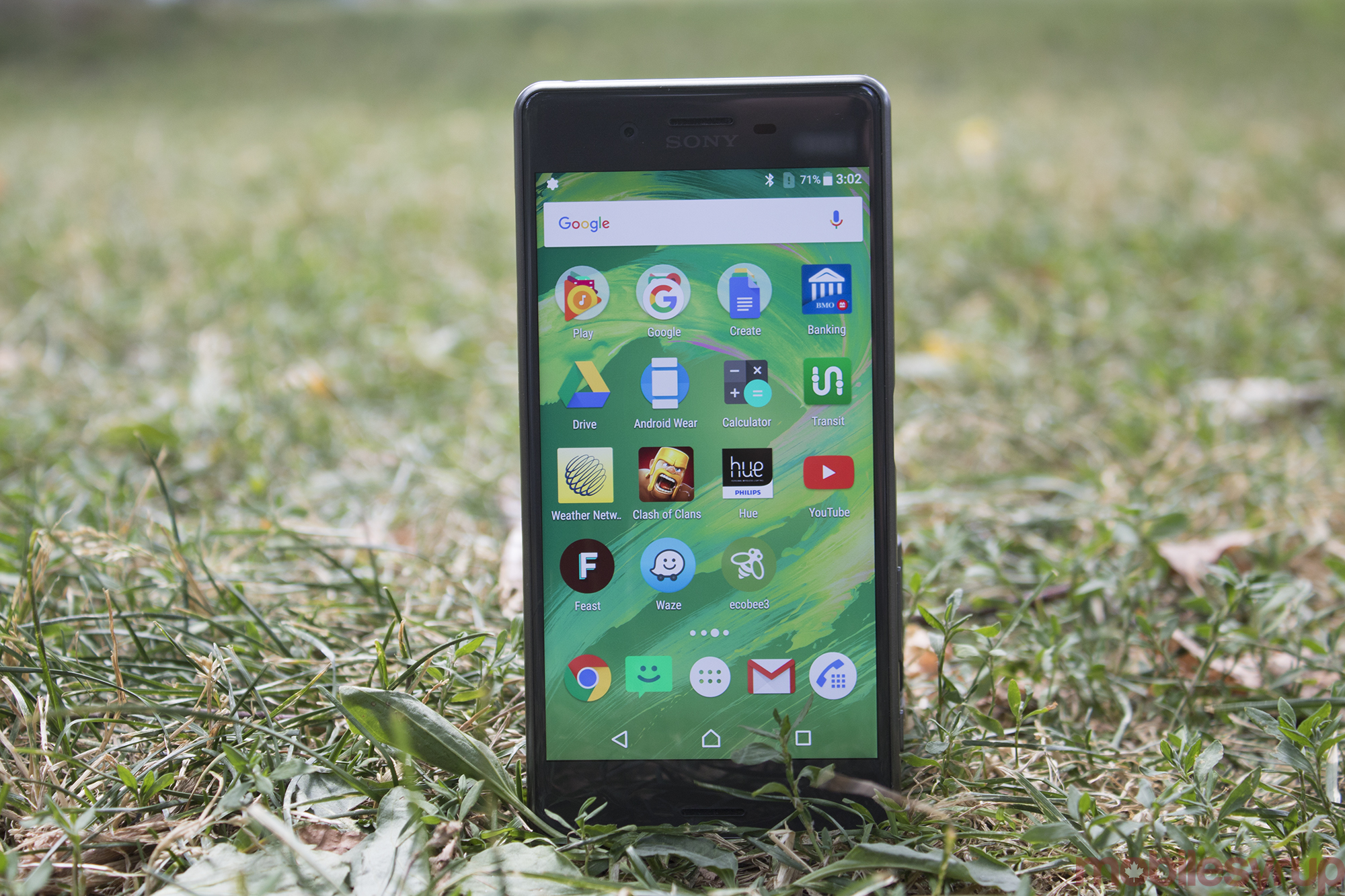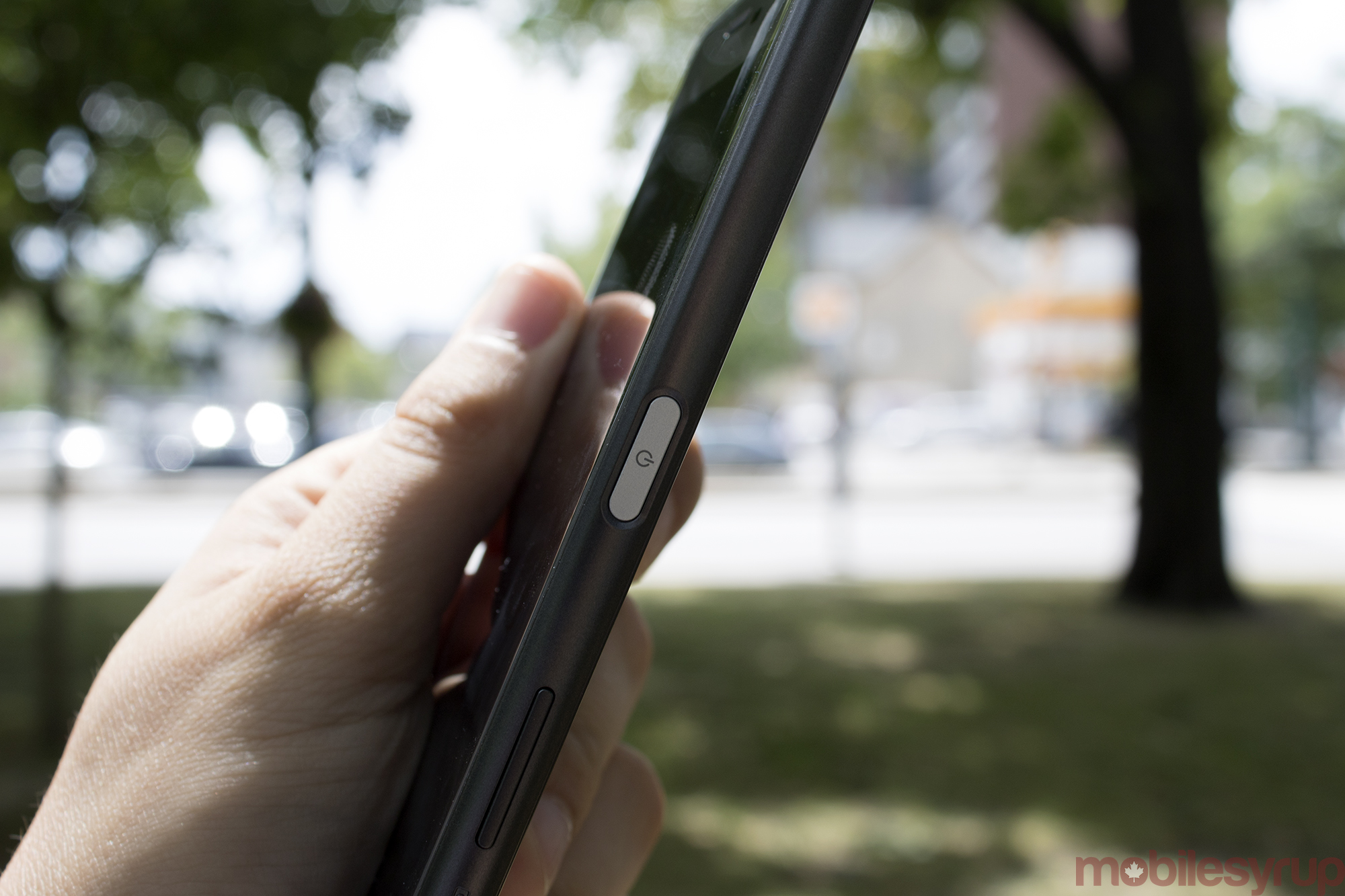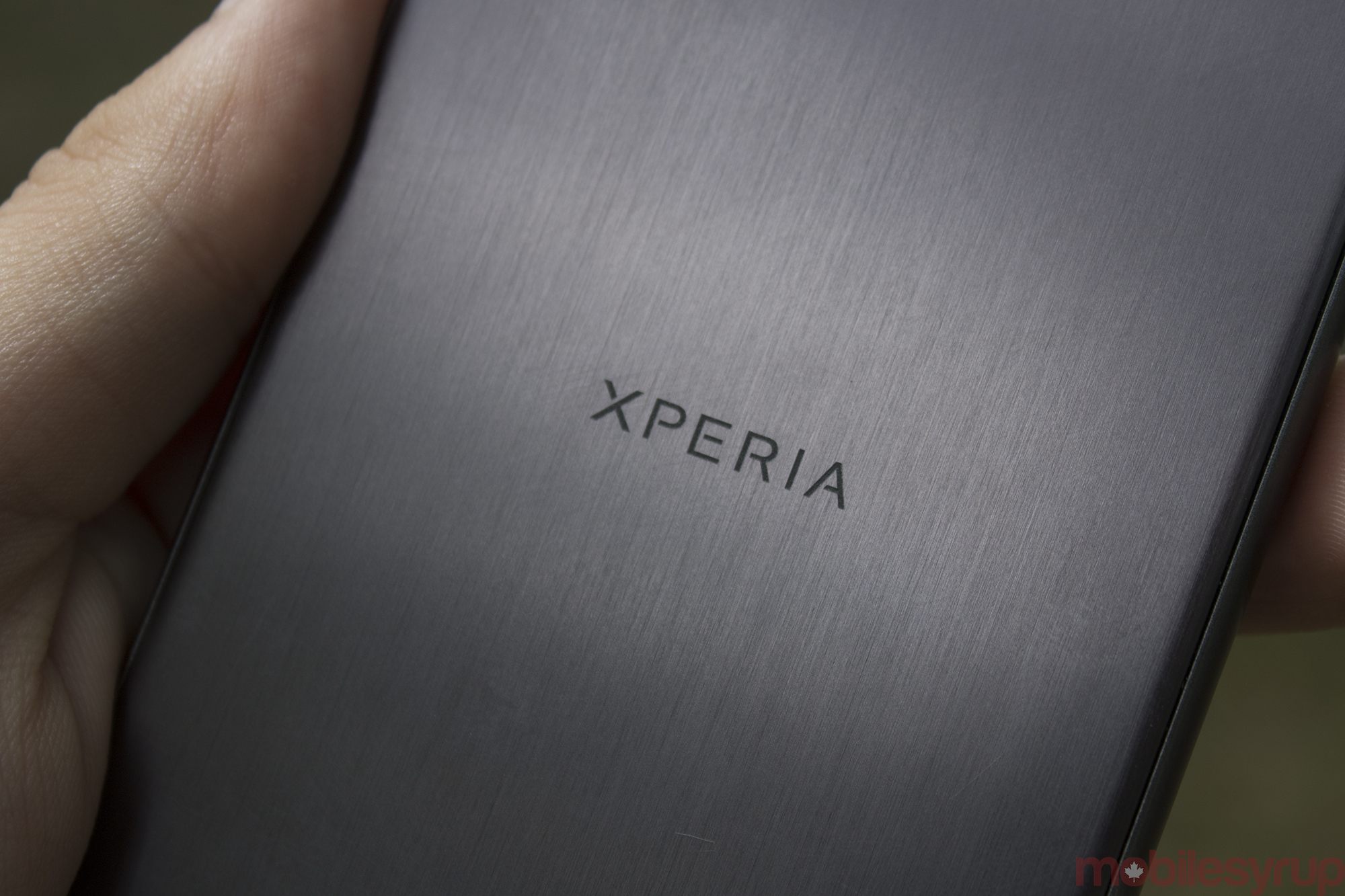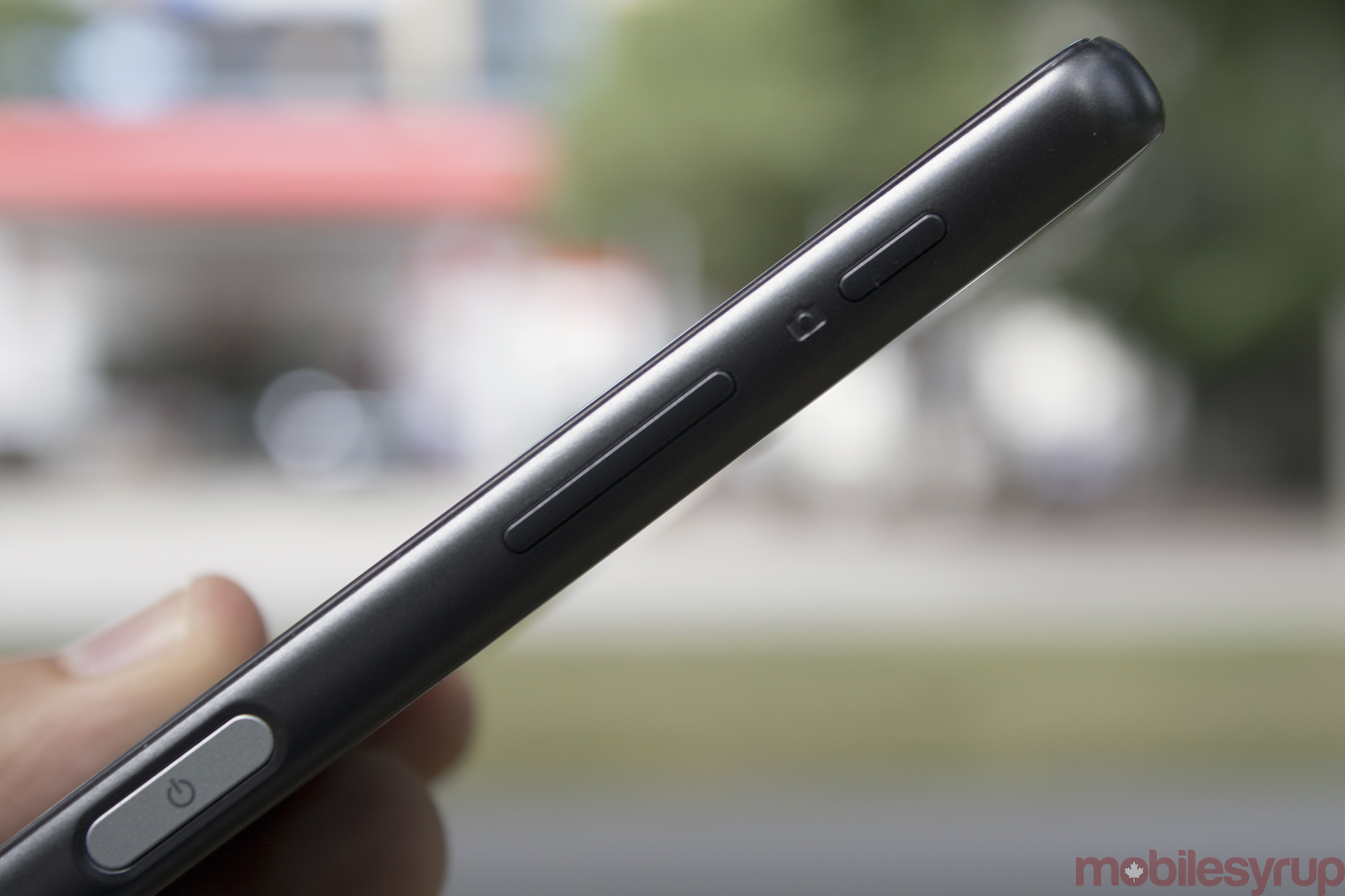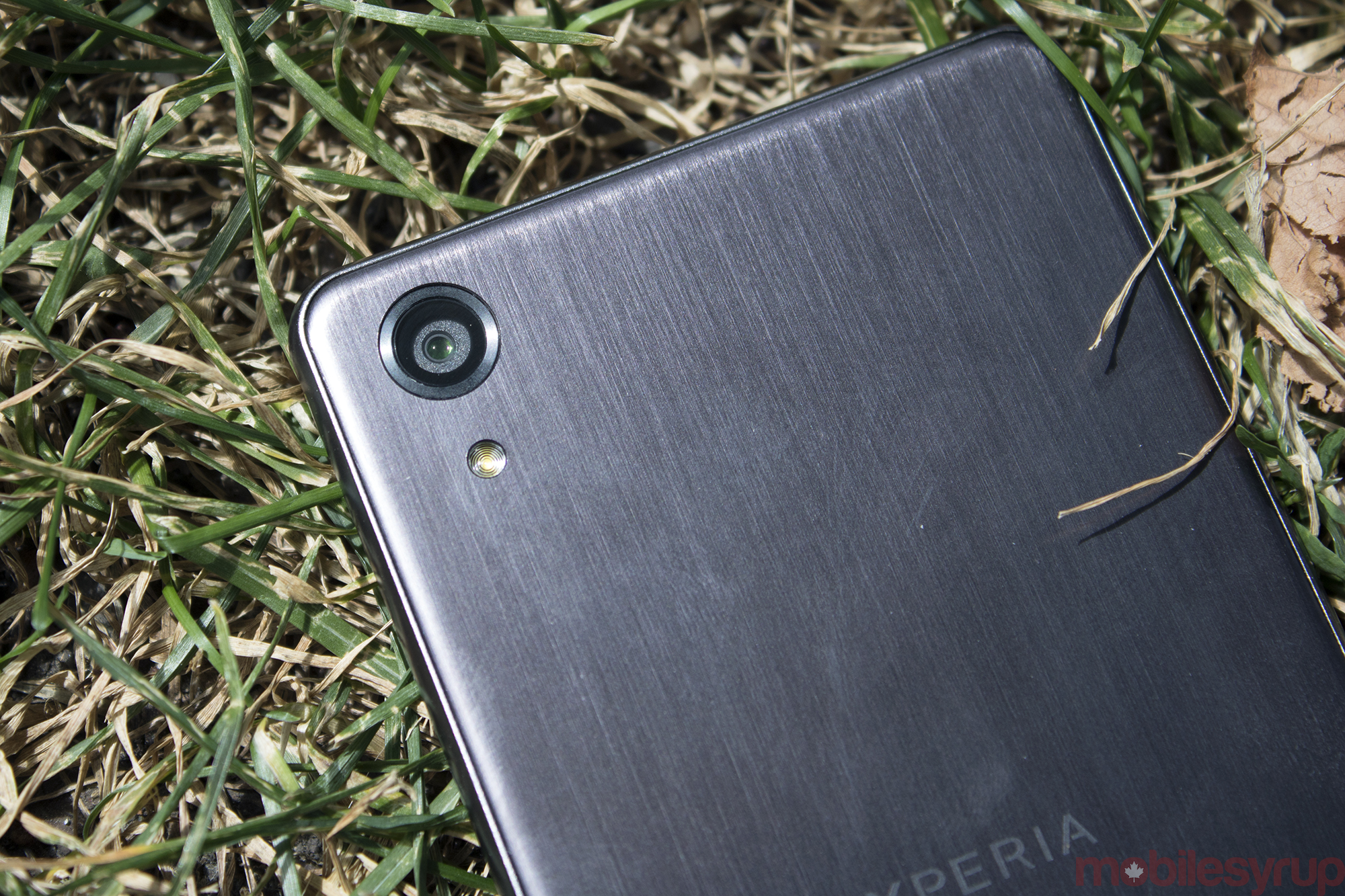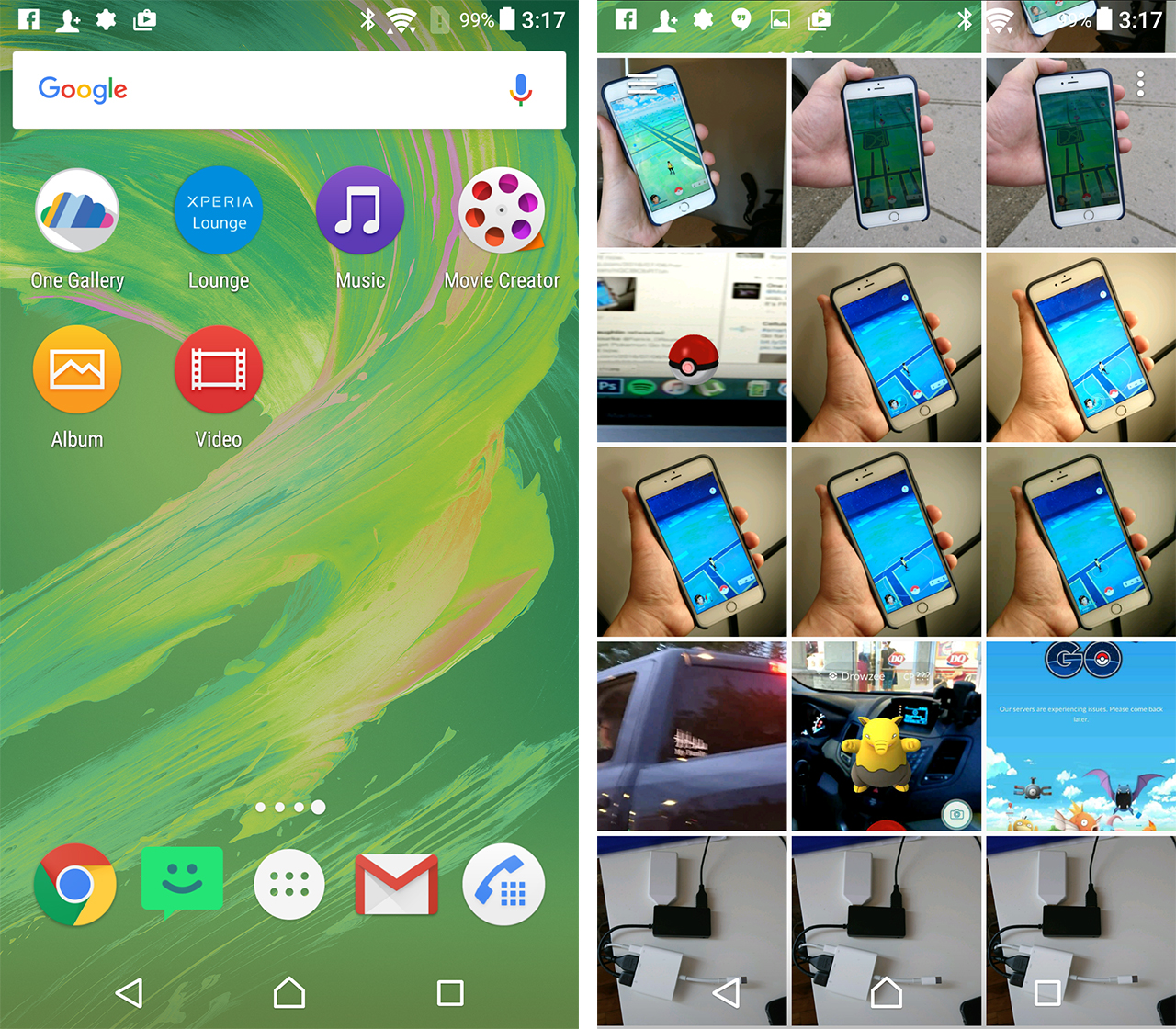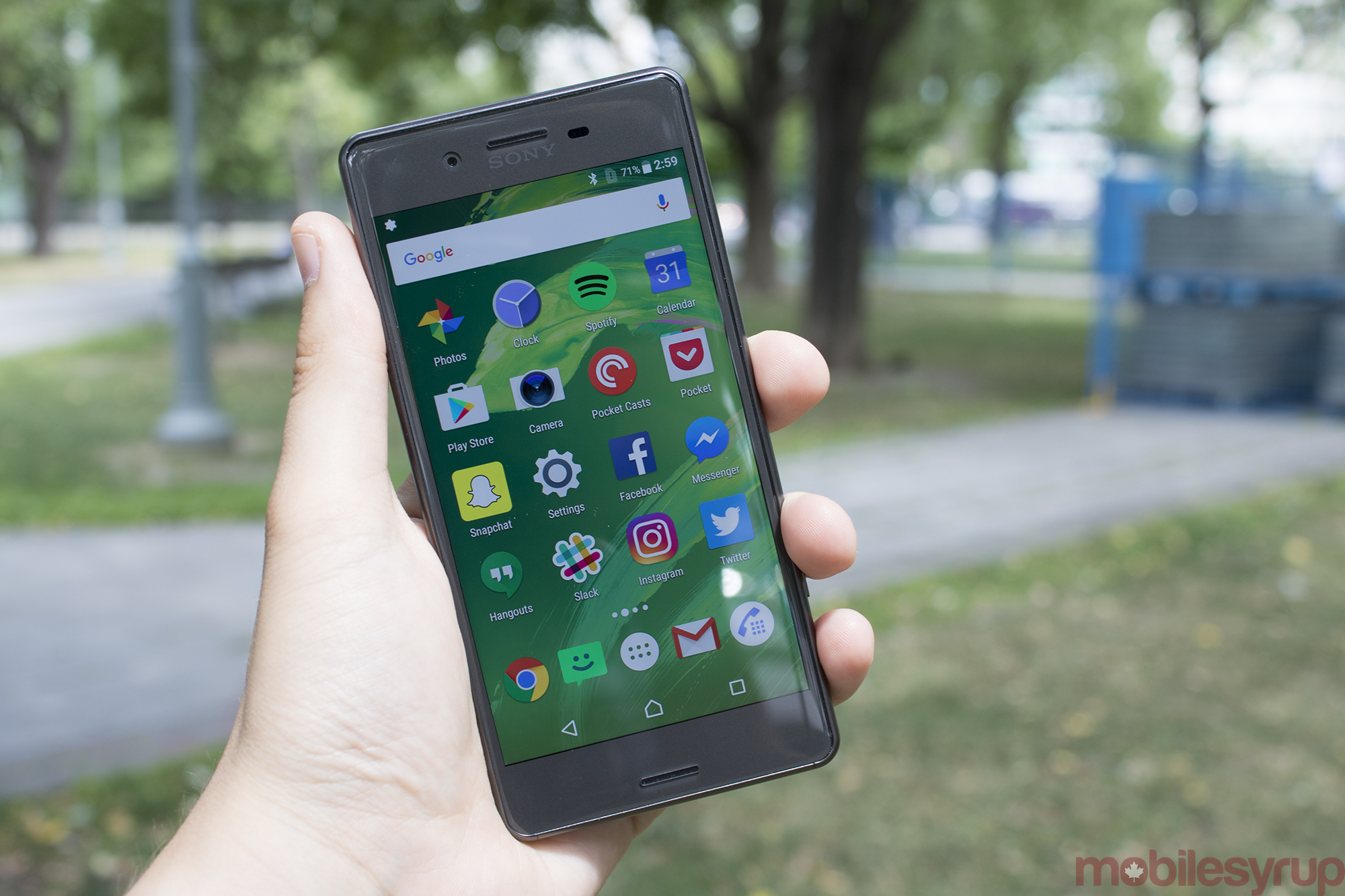
Anyone familiar with what Sony’s Xperia Z series looks like will instantly recognize the tech giant’s new, refreshed ” X” smartphones. The new line of devices and likely successors to the Z — though Sony won’t confirm this — marks a subtle, yet positive design shift for the company.
Unfortunately, despite some key steps in the right direction in terms of build-quality and hardware, the X line, particularly the flagship X Performance, is only an iterative step forward over the Z5, resulting in a phone that has questionable appeal in the 2016 mobile market.
Technical specs
- 5.0-inch 1080p IPS LCD Display 1920 x 1080 resolution (441ppi)
- 23 megapixel, ƒ/2.0 rear-facing camera, 13 megapixel, ƒ/2.0 front camera
- 2700 mAh battery with Quick Charge 2.0
- Qualcomm Snapdragon 820 processor, Dual-core 2.15GHz, Dual-core 1.6Ghz
- 3GB RAM
- 32GB internal storage
- IP68 certified (water resistant up to 1.5 metres and 30 mins.)
- Micro USB
- microSD slot
A few design steps forward, one step back
Gone is the surprisingly scratch-resistant glass backing featured in the Z5 and in its place is a scuff-magnet metal rear. In the few weeks I’ve spent with the waterproof, IP68-rated smartphone its backing has received a number of minor scratches, and I tend to be very careful with my smartphones. While not a signifiant issue, given how great the Z5 was at resisting the pains of a scratch-filled smartphone, this shift is a disappointment.
On the plus side, the ridge that runs the circumference of the Z5, which actually separated from the smartphone after just a few days of use in my experience, seems to have been solved with the X Performance, X, and the rest of the X line.
The phone’s slightly curved glass display and polycarbonate edges create a contour running around the handset, giving it a more rounded appearance. While I’m fond of this shift in design direction, those who preferred the Z5’s black, rectangular slab approach to smartphone aesthetics, will likely not enjoy the X series and the Performance’s new, more curvy look.
The placement of the X Performance’s buttons and its side fingerprint sensor are identical to last year’s Z5, which means anyone who didn’t like the volume rocker — though it is slightly longer than last year’s — and power button placement towards the bottom of the phone’s side, rather than on the top like most smartphones, will still have this problem to contend with.
It’s worth noting, however, that after just a few hours of use I became used to the X’s strange button placement.
Furthermore, while this issue doesn’t affect the Canadian market, the U.S. version of the Sony Xperia X Performance doesn’t feature a fingerprint sensor in the phone’s side-facing power button. Since the X I tested is the Canadian/International model, it came equipped with a fingerprint sensor. Just like last year with the Z5, however, I found that while the sensor worked 80 percent of the time, in many situations it was not responsive, forcing me to unlock the handset with my security pin.
In general, I’ve alway been a fan of the Z line’s look and actually think the X’s subtle changes are an improvement. The X Performance is a solid smartphone build-wise, and certainly lives up to its price tag.
Why do the X and X Performance both need to exist?
The X Performance is nearly identical to the mid-range Xperia X, which I also briefly tested for this review, though it is a few millimetres thicker, coming in at 8.7mm compared to 7.9mm, and also features a few notable hardware upgrades.
The X Performance is priced at about $699 off contract and the X at $549, leading me to question why both smartphones are available in the Canadian market in the first place given the $150 difference between the pair. Apart from the slight form factor shift, the only other notable change is that the X Performance features a Snapdragon 820 and the X a mid-range Snapdragon 650.
While both mobile processors are competent, the 820 is superior to the 650. Releasing two nearly identical products in Canada seems like a misstep by Sony, especially when the price between both devices is so similar.
The X line is already confusing enough and releasing two devices that are almost the same just makes matters worse for the company.
High-end hardware galore
Given the Xperia X Performance is Sony’s 2016 flagship smartphone, it makes sense that the handset features impressive specs.
The phone rocks a 2700mAh battery (the X features a 2620mAh power source) that I found competent, with battery life lasting well in to the evening and in some cases even longer with moderate use. If I had to attach an hour expectation to the X Performance’s battery, I’d say it easily lasts eight to nine hours of moderate use, which is relatively standard in the modern Android world.
Those expecting a pixel upgrade in the screen department, however, will be disappointed to learn the X Performance rocks an IPS LCD 1920×1080 441ppi display, though it is just as crystal clear and vibrant as the screen featured in the Z5. It doesn’t match the Quad HD resolution of other slightly more expensive flagship smartphones, particularly the S7, though Samsung’s top tier device is also more expensive than the X Performance.
One perk of the X Performance’s display is that the screen is capable of becoming extremely bright, possibly brighter than even the iPhone 6s, which is great for those who frequently use their phone outdoors in direct sunlight.
The X Performance’s IPS display has its downsides, however. Regardless of what keyboard I used with the phone, whether the standard Google Keyboard or Sony’s stock one, I frequently found the phone just couldn’t keep up with my typing and display presses.
I ran into the same situation when browsing the web and in some cases playing games, particularly Pokémon Go. This is a frustrating issue that could be fixed through a minor firmware update, but it’s unclear if that will happen in the near future.
Decent photography functionality
Those who aren’t fond of camera bumps will be pleased to know that just like last year’s Z5, the X Performance doesn’t feature a camera bump (the X, however, does). In terms of performance I found the handset’s 23 megapixel back shooter took lacklustre, noisy photos under low-light, but performed admirably in natural light conditions outdoors. Though it’s worth noting that the X Performance’s camera app and even third-party photography apps, take longer to load when compared to performance with other smartphones in this price range. I also found focusing finicky, with the camera sometimes nailing autofocus quickly, and in other cases, being totally unable to hone in on the subject at all.
With almost all high-end handsets offering solid photography functionality in today’s Android market, a device needs to snap truly stellar photographs to stand out. The S7 still features the top camera phone around in my opinion, with admirable attempts from HTC with the 10 and Motorola’s mid-range G4 Plus (when in manual mode), coming close behind; as well as the iPhone 6s. From my testing, the X Performance seems to match the 6P as far as photography funcionality is concerned, performing averagely under almost all conditions, but never really standing out in the quality department unless the photo is snapped in perfect natural light.
Processor wise, the X Performance features a Snapdragon 820 over the X’s 650 — the latter is actually quite capable of running Android 6.0 and its 5-inch 1080p display with no lag in the X. Obviously, the same can be said about the Snapdragon 820, which, while I still feel runs hot when performing certain tasks like gaming or even just casually browsing the internet, ran very smoothly in Sony’s latest flagship.
I will, however, say that the X featuring a dedicated camera button, just like the most of the Z line, is something I wish more smartphone manufactures opted to include in their devices. As a side note, it’s worth mentioning that the phone utilizes Micro USB instead of USB-C, a strange decision on Sony’s part given most other flagships — other than the S7 and S7 Edge — feature the new USB standard.
Bloatware overload
Unlike HTC, which nixed most of its bloatware with the 10, Sony still seems to be fond of shoehorning unwanted software onto its flagship devices.
The Performance features the company’s own gallery, video player, music player, news aggregator and sketching apps as well as a Shazam clone, just to name a few, all of which can’t be deleted from the device. In total, Sony’s Android skin, which also includes pre-installed apps, utilizes about 12GB of the phone’s 32GB of storage right out of the box, a move that will surely lead to many users quickly filling up their phone’s storage.
Google, the architect of the Android operating system, already offers superior services to many of the propriety Sony apps features in the X line, making much of Sony’s proprietary software superfluous.
While Android devices full of unwanted bloatware was a common occurrence a few years ago, most companies have opted to utilize Google’s core apps instead. This is a shift Sony should have made with the Xperia X line as well. To Sony’s benefit, the Xperia X Performance’s overall Android skin is relatively minimal, mostly amounting to small aesthetic flourishes.
Better options in a crowded market
If the Xperia X were released a few years ago, the $699 phone would be easier to recommend. However, in an increasingly competitive Android smartphone market full of $500, but still high-end handsets — devices like the ZTE Axon 7 and OnePlus 3 instantly come to mind — the Xperia X Performance is a tough sell, even for Sony faithful.
The handset also isn’t enough of an upgrade over the Z5, both in terms of hardware and aesthetic, to warrant a purchase for hardcore Sony fanatics. In the end, the Xperia X Performance is far from a bad phone, there are just better options out there in 2016.
Pros
- Build-quality is improved over the Z5
- Still looks sleek
Cons
- Camera performance is average
- Better phones in this price range
- No stand-out features

